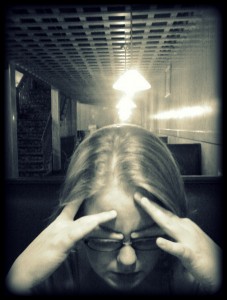WEDNESDAY, 2 DECEMBER 2015
affect how likely it is that you will to buy something, or your outputin a reasoning test? Think again. This is the main conclusion found in a
series of experiments recently published at the Journal Social Cognition.
In this study lead author Daphna
Oyserman and colleagues exposed people to different situations, some of
which were culturally common, and some of which were not. For example,
people were either shown ‘normal’ wedding pictures (bride in a white
dress, groom in a black tuxedo, a tiered cake), or pictures of a
‘strange’ wedding (bride wearing green, groom in a purple tuxedo, a cake
decorated with gears). Surprisingly, what type of pictures people had
seen strongly influenced their performance on a reasoning task taken
afterwards.
Those who saw normal pictures were more
likely to choose an intuitive but wrong answer on this task. They were
also more prone to buy random items than those who saw the strange
pictures.

The pictures influenced people's reasoning
similar results across independent experiments, which were performed in
different countries, with subjects of different ages, and carried out in
different social contexts. The results are consistent: cultural shocks
affect our reasoning.
How can this be? There seems to be a
dichotomy in the way our brain thinks and processes information. This
dual-process theory was first proposed in the late 1800s, and has
received lots of experimental support ever since. The idea is that there
are two distinct systems underlying reasoning. System one is fast,
automatic and intuitive. It is happy to give quick answers to problems,
and will most likely stay in control as long as the situation is
pleasant and at ease. Unlike system one, system two is slow, analytical
and logical. Difficult cognitive tasks can only be performed by system
two. But because system two demands lots of cognitive capacity, it is
also lazy. So it will only take charge when really needed. These results
suggest that cultural fluency (seeing everything as expected) keeps
system one happy and in charge, whereas a cultural shock serves as an
alarm call for our lazy system two to wake up, take charge, and pay
attention to details. This is one of many studies showing the great
advantages that cultural diversity can have.
DOI: 10.1521/soco.2015.33.4.308
More information on dual-process theory and cognitive biases can be found in Daniel Kahneman’s book Thinking Fast and Slow.
Written by Ornela De Gasperin.
